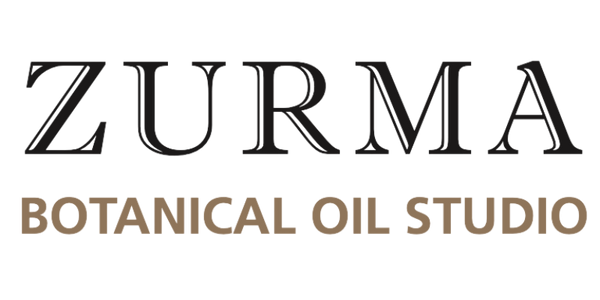
Why Natural Lubricants Matter – A Closer Look at Organic Pleasure by Zurma
Share
Lubricants can make intimacy more comfortable, help ease dryness, and support vaginal health. But not all lubricants are created equal. Many commercial products contain synthetic ingredients that may feel smooth at first but can quietly cause irritation, upset the body’s natural pH, or harm the helpful bacteria that keep things in balance.
What’s Really in Your Lube?
When you use a lubricant, it comes into contact with some of the most sensitive tissue on your body. That tissue is very absorbent—which means ingredients don’t just sit on the surface; they can be taken up into the body. Some commercial lubricants include nonoxynol-9, a chemical that kills sperm and is often used in contraceptives. It works by breaking down the outer layer of sperm cells—but it also breaks down the protective layer of your own cells. This can increase the risk of irritation and infections like herpes and HIV, especially when used frequently (Fuchs et al., 2007).
Another important factor is osmolality—a scientific word that simply means how concentrated a product is with dissolved particles (like sugars or salts). If a lubricant is too concentrated—what scientists call hyperosmolal—it can draw water out of your vaginal cells. This leaves them dry, damaged, and more likely to become inflamed or infected. A healthy vaginal environment has an osmolality around 370 mOsm/kg. The World Health Organization recommends lubricants stay below 1200 mOsm/kg to avoid harm.
A study published in Toxicology Reports tested several popular lubricants and found that many had osmolality levels much too high. These products reduced the integrity of vaginal tissue and caused visible damage in lab-grown vaginal models (Ayehunie et al., 2018). The lubricants most likely to cause damage were those that included large amounts of glycerin, propylene glycol, and other synthetic compounds.
A Safer Alternative: Organic Pleasure by Zurma
At Zurma, we believe your body deserves better. That’s why we created Organic Pleasure, a natural water-based lubricant made entirely from clean, safe, plant-based ingredients.
This silky, non-sticky formula is made with organic Aloe Vera, which soothes and hydrates, and New Zealand Harakeke extract, a native botanical that is naturally calming. It’s carefully pH-balanced at 4.5 to match the body’s normal acidity—so it won’t disturb your vaginal environment.
What makes it truly unique is the inclusion of probiotics—specifically Lactobacillus acidophilus and Bifidobacterium lactis. These are the same types of good bacteria that live in a healthy vagina. They help defend against infections, maintain the right pH, and keep your intimate microbiome in balance (Petrova et al., 2013).
Organic Pleasure contains no glycerin, silicones, parabens, PEGs, or synthetic preservatives. It’s vegan, suitable for use with condoms and toys, and comes in beautifully simple glass bottles with refill options available.
Why Natural Lubricants Make a Difference
Clinical studies continue to show that products with high osmolality or harsh ingredients can damage the protective layers of the vagina and increase the risk of bacterial vaginosis, yeast infections, and other discomforts (Dezzutti et al., 2012; Brotman, 2011). And while these effects might not be noticeable right away, they can accumulate with long-term use.
Choosing a lubricant that supports your body’s natural defences—rather than fighting against them—can help you feel more comfortable and confident. Zurma’s Organic Pleasure was designed with that in mind: a lubricant that works in harmony with your body, while also feeling great to use.
References
Ayehunie, S., Wang, Y.-Y., Landry, T., Bogojevic, S., & Cone, R. A. (2018). Hyperosmolal vaginal lubricants markedly reduce epithelial barrier properties in a three-dimensional vaginal epithelium model. Toxicology Reports, 5, 134–140. https://doi.org/10.1016/j.toxrep.2017.12.011
Brotman, R. M. (2011). Vaginal microbiome and sexually transmitted infections: An epidemiologic perspective. Journal of Clinical Investigation, 121(12), 4610–4617. https://doi.org/10.1172/JCI57172
Dezzutti, C. S., et al. (2012). Is wetter better? An evaluation of over-the-counter personal lubricants for safety and anti-HIV-1 activity. PLoS ONE, 7(11), e48328. https://doi.org/10.1371/journal.pone.0048328
Fuchs, E. J., Lee, L. A., Torbenson, M. S., et al. (2007). Hyperosmolar sexual lubricant causes epithelial damage in the distal colon: Potential implication for HIV transmission. Journal of Infectious Diseases, 195(5), 703–710. https://doi.org/10.1086/511279
Petrova, M. I., van den Broek, M., Balzarini, J., Vanderleyden, J., & Lebeer, S. (2013). Vaginal microbiota and its role in HIV transmission and infection. FEMS Microbiology Reviews, 37(5), 762–792. https://doi.org/10.1111/1574-6976.12029
Vogler, B. K., & Ernst, E. (1999). Aloe vera: A systematic review of its clinical effectiveness. British Journal of General Practice, 49(447), 823–828. https://www.ncbi.nlm.nih.gov/pmc/articles/PMC1313538/
